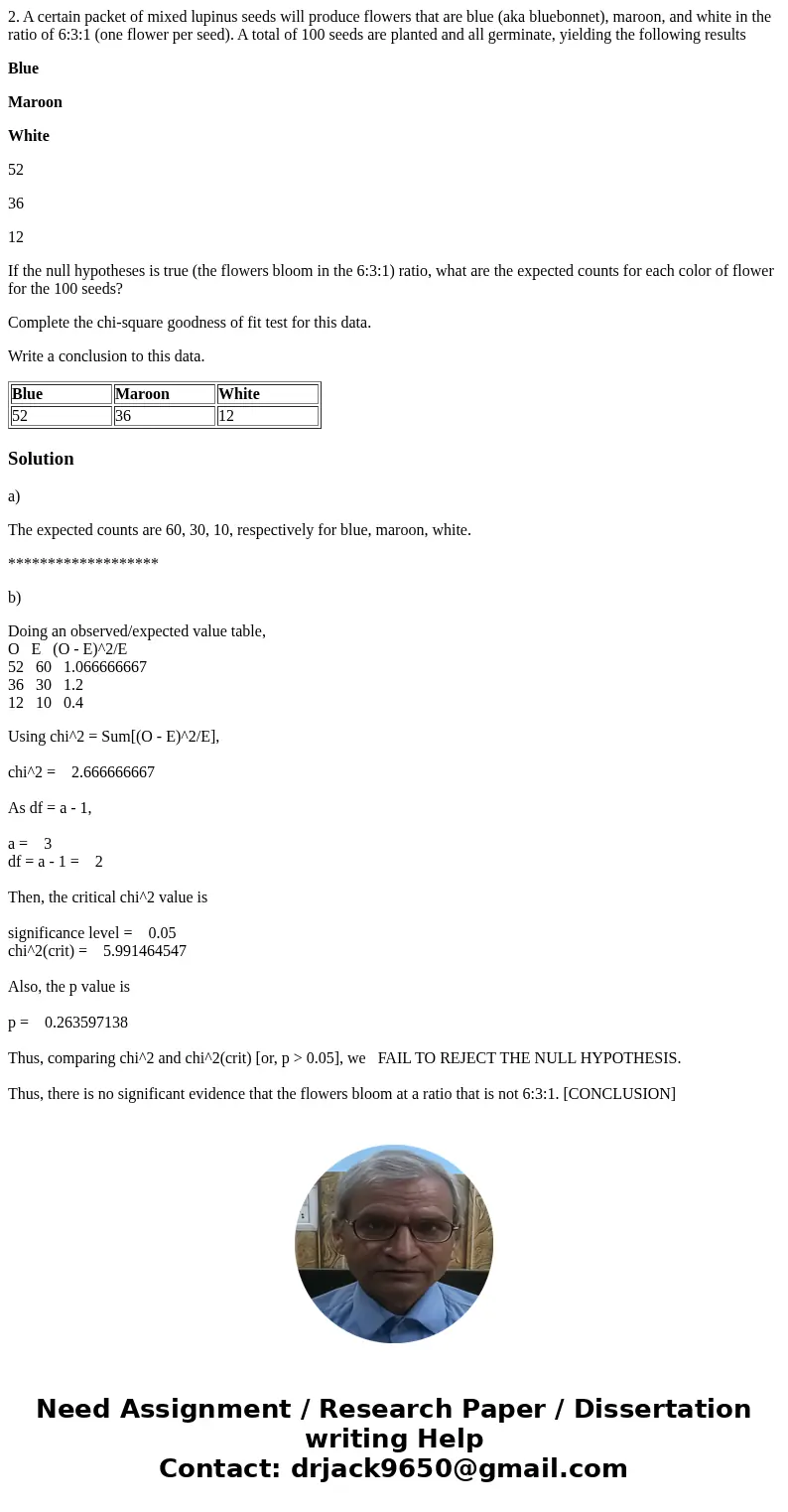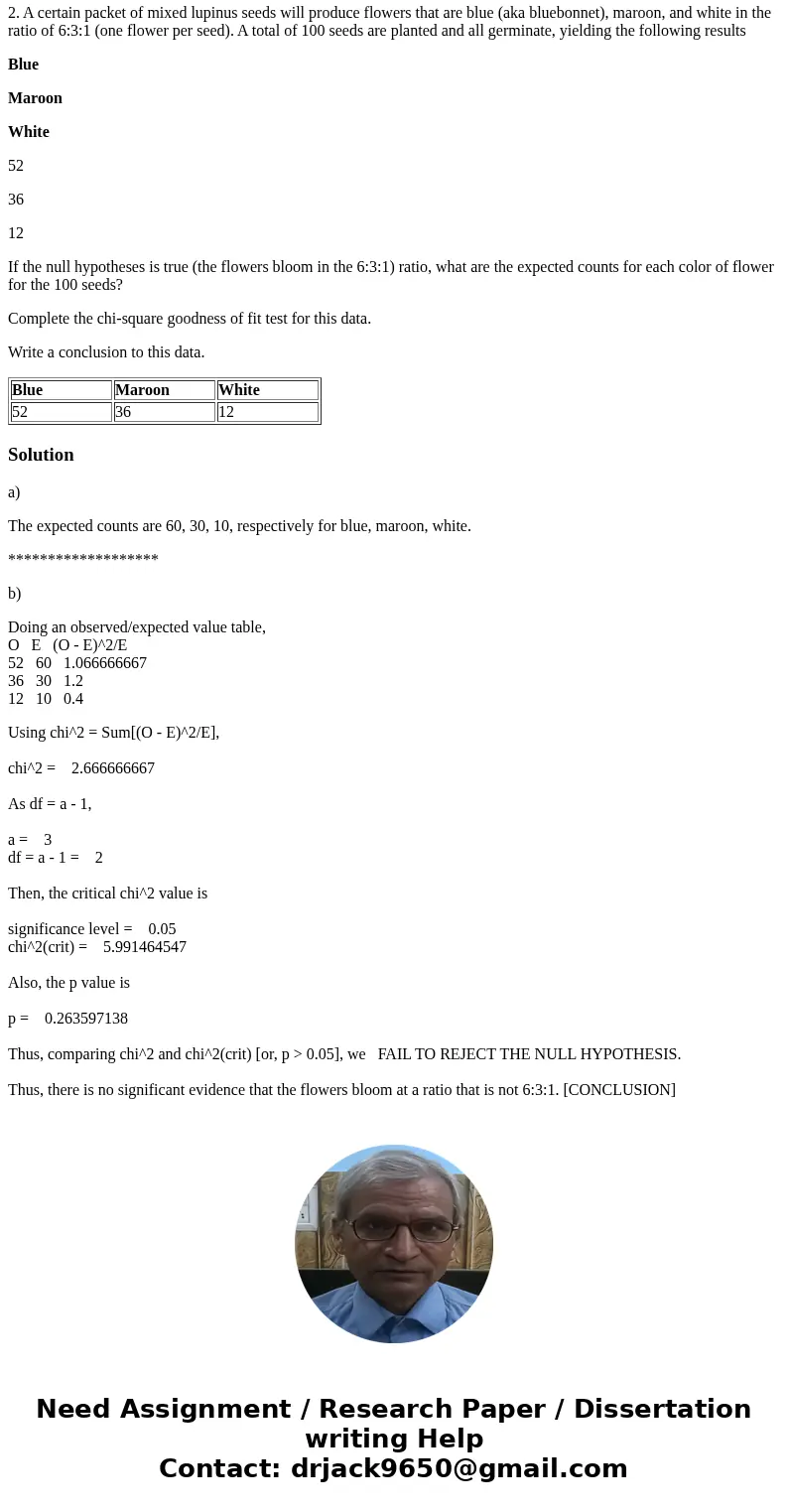2 A certain packet of mixed lupinus seeds will produce flowe
2. A certain packet of mixed lupinus seeds will produce flowers that are blue (aka bluebonnet), maroon, and white in the ratio of 6:3:1 (one flower per seed). A total of 100 seeds are planted and all germinate, yielding the following results
Blue
Maroon
White
52
36
12
If the null hypotheses is true (the flowers bloom in the 6:3:1) ratio, what are the expected counts for each color of flower for the 100 seeds?
Complete the chi-square goodness of fit test for this data.
Write a conclusion to this data.
| Blue | Maroon | White |
| 52 | 36 | 12 |
Solution
a)
The expected counts are 60, 30, 10, respectively for blue, maroon, white.
*******************
b)
Doing an observed/expected value table,
O E (O - E)^2/E
52 60 1.066666667
36 30 1.2
12 10 0.4
Using chi^2 = Sum[(O - E)^2/E],
chi^2 = 2.666666667
As df = a - 1,
a = 3
df = a - 1 = 2
Then, the critical chi^2 value is
significance level = 0.05
chi^2(crit) = 5.991464547
Also, the p value is
p = 0.263597138
Thus, comparing chi^2 and chi^2(crit) [or, p > 0.05], we FAIL TO REJECT THE NULL HYPOTHESIS.
Thus, there is no significant evidence that the flowers bloom at a ratio that is not 6:3:1. [CONCLUSION]


 Homework Sourse
Homework Sourse